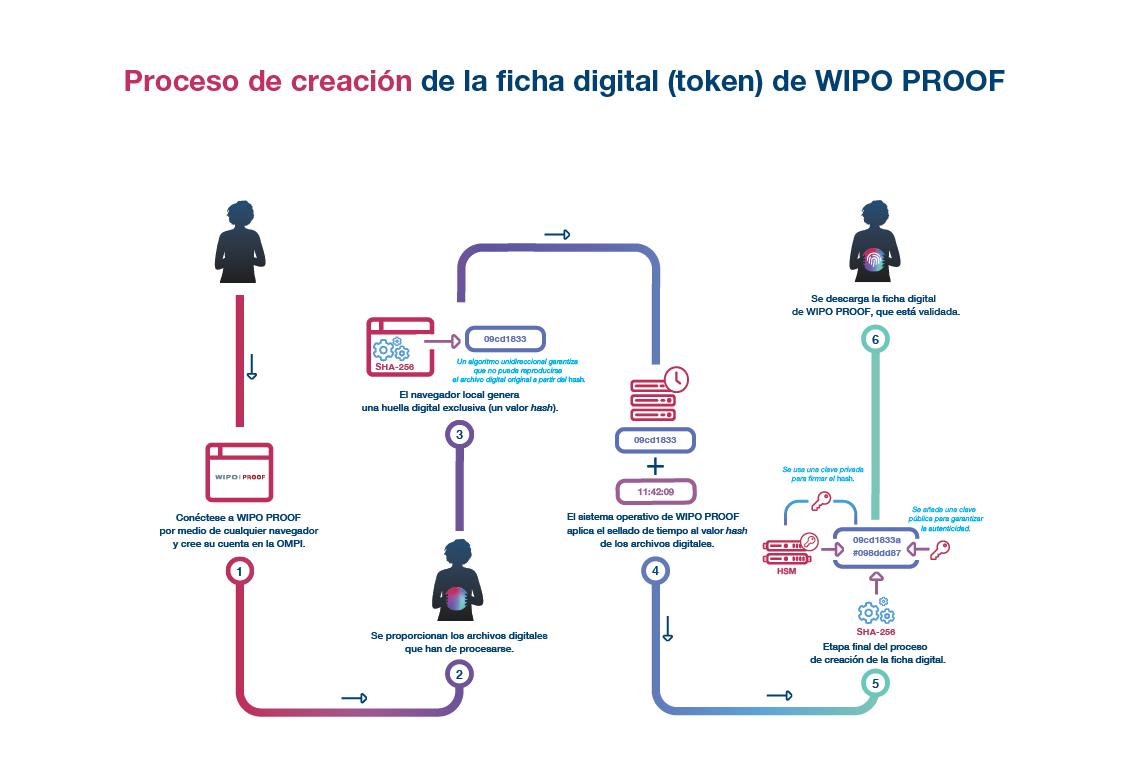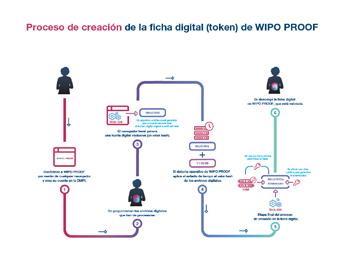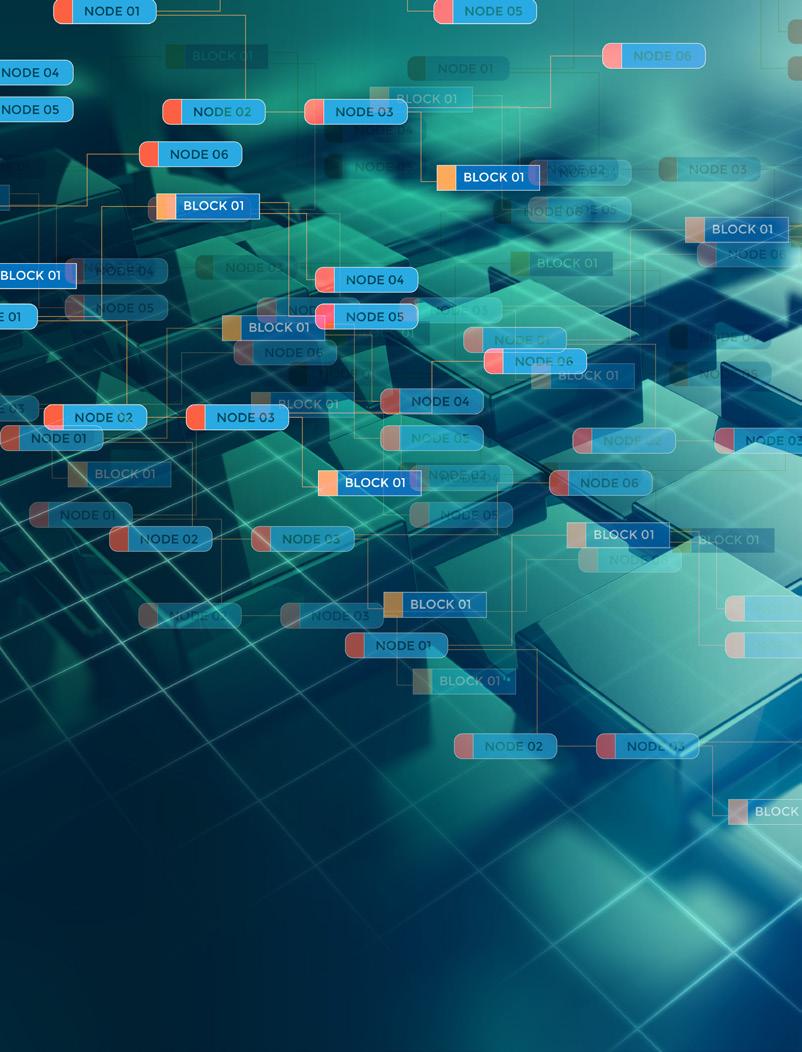
4 minute read
CENTRAL LAW
BLOCKCHAIN COMO MEDIO DE PROTECCIÓN Y EXPLOTACIÓN DE OBRAS LITERARIAS Y DERECHOS DE AUTOR
La cadena de bloques esta revolucionando la forma de proteger y explotar los derechos de autor.
Referencias:
• https://es.wikipedia.org/wiki/Token_(inform%C3%A1tica) • https://www.wipo.int/wipo_magazine/es/2018/01/article_0005.html • https://wipoproof.wipo.int/wdts/ • https://www.leftherian.com/index_1.html#/page1/pCanciones • https://www.bernstein.io/ • https://poex.io/ La cadena de bloques (blockchain) está revolucionando el comercio digital; su mayor auge es través de las criptomonedas (bitcoin, ethereum, etc), pero también sus aplicaciones en varias materias, incluyendo la propiedad intelectual.
El blockchain crea registros inalterables, protegidos por medio de criptografía que permiten la transparencia de la diferente información transmitida a través de transacciones en bloques con registro de fecha y hora. Al ser inalterables, pueden tener diferentes aplicaciones en materia de protección de activos de propiedad intelectual para su protección y explotación. Uno de los principios del derecho de autor es ser antiformalista y universal, no es necesario realizar un registro previo en oficinas de propiedad intelectual para gozar de dichos derechos. Esto implica un mayor acceso a estos derechos, pero

a la vez resulta complicado probar su titularidad. Blockchain al ser inalterable y establecer un sello de tiempo, ofrece a los titulares de derechos de autor un mecanismo fiable y seguro para su registro y protección de los derechos de autor y medios de prueba para poder reivindicar o reclamar dichos derechos.
A manera de ejemplo, un autor de un libro puede registrar a través de la cadena de bloques quesu obra haya sido publicada o no. Crearía un código único (hash), que identifica la obra registrada, en caso de que la obra sea alterada, el hash no coincidiría. Esto permite comprobar la identidad de la obra y sirve como medio de prueba de la titularidad e integridad de la misma.
Existen varios sitios web dedicados a prestar estos servicios, tal es el caso de Wipoproof, creado por la Organización Mundial de la Propiedad Intelectual, también se encuentran sitios como Leftheriam, Bernstein, Poex.io; los cuales permiten a través de blockchain, demostrar la existencia de una obra en un momento determinado y de esta forma poder reclamar los derechos patrimoniales o morales de la obra.
También, estos registros de obras en blockchain, permiten convertir los derechos patrimoniales a Tokens No Fungibles (NFT), y de esta forma, podemos otorgar los derechos patrimoniales de una obra, explotarlos y demostrar la titularidad de dichos derechos, dentro de un contorno físico o digital.
La sociedad continua en constante evolución hacia un mundo digital, los libros son parte esencial del desarrollo de la ciencia, arte y cultura del ser humano, debemos replantearnos las formas jurídicas establecidas para la explotación, protección y fomento de las obras literarias en el espacio digital.
BLOCKCHAIN AS A MEANS OF PROTECTION AND EXPLOITATION OF LITERARY WORKS AND COPYRIGHTS
Fernando J. Díaz Durán Corzo | Lawyer - Intellectual Property
Blockchain is revolutionizing digital commerce; its greatest boom is through cryptocurrencies (bitcoin, ethereum, etc), but also through its applications on various subjects such as intellectual property.
Blockchain creates unalterable records, protected through cryptography that allows transparency for the different types of information transmitted through transactions in blocks with registered date and time stamps. By being unalterable, they can have different applications in terms of intellectual property assets for their protection and exploitation.
One of the principles of copyright is being antiformalist and universal, it is not necessary to register it at intellectual property bureaus to enjoy such rights. This implies better access to these rights, but at the same it is complicated to prove their ownership. Blockchain, by being unalterable and providing a time stamp, provides the copyright owners with a reliable and secure mechanism for the registration and protection of copyrights and the proof means to uphold or claim such rights.
As an example, the author of a book can register through blockchain that their book has been published or not. It creates a unique code (hash) that identifies the registered work. In case the work is altered, the hash would not match. This allows verifying the identity of the work and serves as means of proof of ownership and the integrity of the said work.
There are several websites dedicated to providing these services, such as Wipoproof, created by the World Intellectual Property Organization. There are also sites like Leftheriam, Bernstein, Poex.io; which allow through blockchain by demonstrating the existence of a work at a certain moment and thus being able to claim the patrimonial or moral rights of the work.
This registration of works through blockchain allows turning the patrimonial rights into NonFungible Tokens (NFT) and in this way we can grant the patrimonial rights of a work, be able to exploit them and demonstrate the ownership of such rights, within a physical or digital environment.
Society continues evolving towards a digital world. Books are an essential part of the development of science, art and culture of the human being and we must reconsider the established judicial regulations to exploit, protect and promote literary works in the digital space.
Write the phrase you would highlight here: Society continues evolving towards a digital world. Books are an essential part of the development of science, art and culture of the human being and we must reconsider the established judicial regulations to exploit, protect and promote literary works in the digital space.







